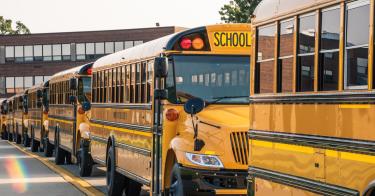Is public school funding on the verge of “unraveling”? According to NPR, it is.
And the public-broadcasting group isn’t alone: As the U.S. Supreme Court considers Espinoza v. Montana Department of Revenue, those who think more private learning options should be available to families and those who disagree are squinting to see an outcome that—like it or not—immediately shakes up traditional K-12 schools in the U.S.
Is change forthcoming? As Yogi Berra said, “You can observe a lot just by watching.”
In 2002, the nation’s Highest Court also considered a challenge to a private school scholarship program. In that case, concerning K-12 scholarships for Ohio children, the Court ruled that the scholarships did not violate the U.S. Constitution even though some families sent their children to religious schools.
The court issued its ruling in June 2002, and, two months later on the first day of school, traditional public schools in Ohio opened as usual. The latest data show that per-student spending in Ohio district schools is $13,000, nearly $2,000 more than the same figure 20 years ago after adjusting for inflation.
Likewise, in April 2011, the Supreme Court ruled that a private learning option in Arizona could stand, despite a challenge backed by the American Civil Liberties Union. Sure enough, in August of that year, Arizona district schools got to work. A multi-year plan to increase teacher pay is among the highlights of the state’s recent education spending increases.
No matter the ruling, the Espinoza decision will not result in the “unraveling” of Montana’s traditional school spending patterns. If the Court reinstates Montana’s cancelled law offering tax credits worth $150 for contributions to organizations that award scholarships, everyone should expect district schools to reopen in the fall.
But as a writer for the Washington Post quipped, isn’t Espinoza “the culmination of a 50-year campaign” to send taxpayer money to religious schools? And doesn’t that upset the government’s relationship with religion, creating funding-related and legal problems?
Nonsense. The very provisions in Montana’s constitution that generated Espinoza—provisions found in dozens of other states—have their roots in the idea that certain religious teaching is suitable in public schools while others are not. More than a century ago, a U.S. Senator found support around the country for so-called “Blaine Amendments,” which attempted to leave Protestant instruction untouched by preventing Catholic families from starting their own public schools.
Montana’s scholarships and similar options in other states do not fund schools but provide aid to parents. Parents then chose how best to educate their children. The state is not “establishing” religion (which would violate the U.S. Constitution), but lawmakers are giving families more opportunities.
This should be lawmakers’ loadstar: Opportunity.
Despite attempts to equalize funding between public schools, the addition of any number of social services to district school operations, and the consistent taxpayer investment in traditional schools, lawmakers have failed to equalize outcomes in K-12 education. Just glance at the stubborn achievement gaps on the Nation’s Report Card or varying high school graduation rates between students from different ethnicities or income status. Children are too different from one to another for policymakers to be able to manufacture results through legislation.
So while public schools may not instantly look different after the Espinoza ruling, lawmakers and taxpayers should see traditional schools differently—not as the cogs in a system that taxpayers must pay for while the institutions resist taking positions on values. Instead, districts schools are options that families can choose between, along with religious or non-religious private schools, home education, or some combination, as they try to help their children succeed.
The late intellectual Roger Scruton often quoted English writer Matthew Arnold in saying that “freedom is a very good horse to ride, but to ride somewhere.” Lawmakers are better at deciding we must go somewhere, such as school, than delivering the things we want when we arrive—such as success.
Espinoza will not unwind public school spending requirements. But it should offer everyone a different perspective on the government’s role in allowing families to consider what matters to them in a child’s education.
An abridged version of this op-ed first appeared in The Hechinger Report




